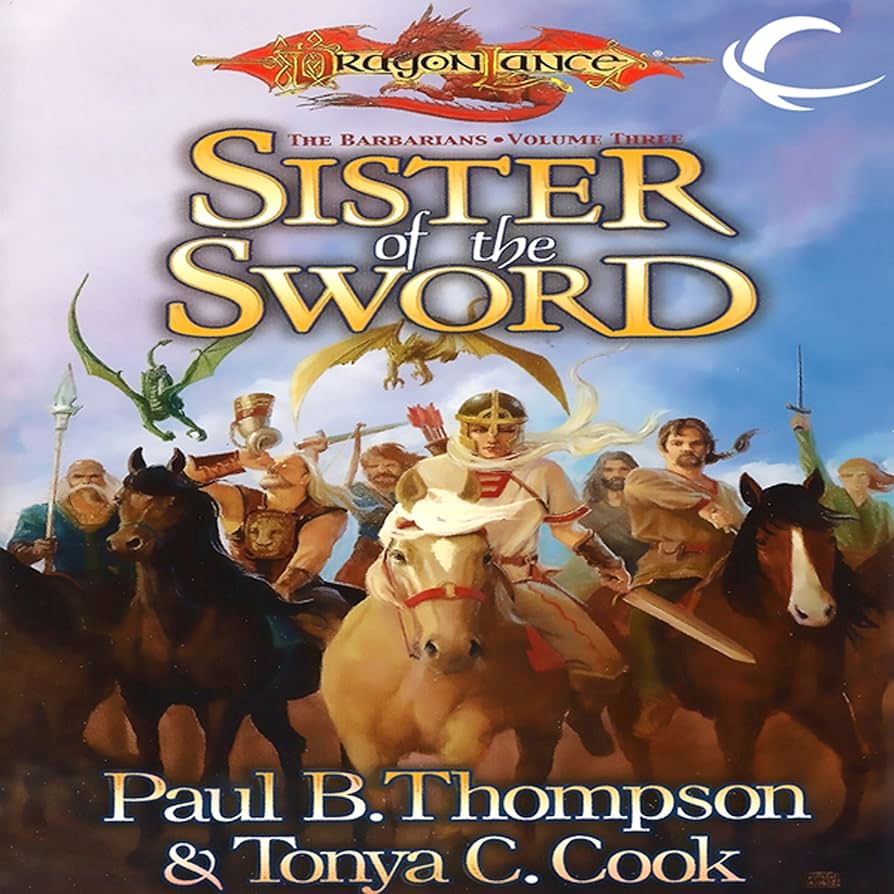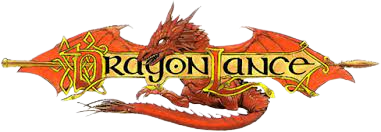Sister of the Sword

Table of Contents
ToggleOverview
Sister of the Sword is the final novel in the Barbarians trilogy, following Goldmoon, daughter of the Que-Shu chieftain, on the last leg of her transformational journey from tribal princess to spiritual icon. The story completes her arc before Dragons of Autumn Twilight, bridging her youthful struggles with the role she will play in restoring faith and healing to Krynn.
This book combines emotional depth, political fallout, and mystical transformation, with strong emphasis on female leadership, reconciliation, and spiritual revelation.
Main Character: Goldmoon
- Daughter of the late Que-Shu chieftain, once expected to become a tribal ruler.
- Now a wandering spiritual leader and survivor, grappling with grief, purpose, and the mystery of the gods’ silence.
- Torn between the customs of her people and the calling of something higher—a new path that challenges the traditions she was raised to uphold.
Supporting Characters
- Riverwind – Goldmoon’s companion and protector, a stoic and deeply principled warrior who begins to emerge as her equal and destined partner.
- Halthar – A warrior with his own ambitions, whose relationship with Goldmoon and Riverwind becomes increasingly strained.
- Locar – A former spiritual guide and antagonist from earlier in the series who plays a surprising role here.
- The Dispersed Tribes – The remnants of the shattered Plainspeople, now searching for leadership and identity after the devastation of their homelands.
Setting
- Begins in the aftermath of tribal collapse, as Goldmoon and her companions journey through the Plains of Dust, abandoned temples, and scattered encampments.
- The environment reflects the emptiness of a godless Krynn, but also hints at renewal—there are ruins, yes, but also seeds of something new.
Plot Summary
A Broken People
Goldmoon and Riverwind return from exile to find their people dispersed, leaderless, and hunted. The Que-Shu are scattered, and their former allies have splintered into factions or given up hope.
Many of Goldmoon’s kin blame her for the downfall—her rebellion against tradition, her refusal to marry for political reasons, her spiritual doubts.
A Path of Prophecy
Guided by visions and sacred relics, Goldmoon begins to piece together the truth: the gods are not dead—they are waiting. She is called to become the first new voice of divine power in generations, but the path requires trials of:
- Faith
- Forgiveness
- And unifying the tribes through new ideals, not old grudges
She begins gathering scattered clans, preaching compassion and purpose instead of vengeance or isolation.
Conflict from Within
Halthar and other tribal leaders resist her. They want vengeance and power, not spiritual healing. As tensions grow, Goldmoon faces open defiance—and must rely on Riverwind’s loyalty and her own inner strength to hold her vision together.
The story explores:
- The politics of leadership
- What it means to lead as a woman in a patriarchal tribal system
- And how healing is often more difficult than war
The Final Revelation
In a mystical climax, Goldmoon receives a divine sign—not a spectacle of power, but a quiet, soul-stirring moment in which she becomes the first true cleric of Paladine in centuries.
With this gift, she becomes the symbol of a rebirth for the Que-Shu and all the Plains tribes: proof that the gods have not abandoned Krynn, and that hope is possible.
She does not return to rule, but to serve as a spiritual guide, walking beside her people rather than ruling above them.
Themes
- Rebirth and Renewal – The Plainspeople must rebuild not just their homes, but their identities—and Goldmoon’s journey mirrors that arc.
- Spiritual Awakening – Goldmoon’s role as the first new cleric is treated with awe, humility, and deep personal cost.
- Healing Through Unity – The book centers on bringing divided people together, not through conquest, but through understanding and faith.
- Gender and Power – Goldmoon’s story challenges traditional roles and shows that true strength can come from empathy, not dominance.
- Love and Partnership – Her bond with Riverwind evolves into a relationship of mutual respect and shared destiny—setting the stage for the Heroes of the Lance.
Tone & Style
- Serious, mythic, and lyrical, with emotional depth and spiritual undertones.
- Less focused on action, more on personal transformation, cultural rebuilding, and prophetic symbolism.
- Feels like the closing chapter of an origin myth, setting the foundation for Goldmoon’s legendary role in Chronicles.
Reception
Sister of the Swords is praised for:
- Providing a deep, respectful exploration of indigenous-coded cultures in Krynn.
- Giving Goldmoon a rich, layered backstory beyond her role in the Chronicles.
- Concluding the Barbarians trilogy with purpose and grace, tying into the greater Dragonlance mythos.
- Strong character arcs and emotional payoffs for long-time readers.
Some critiques:
- Readers expecting intense battles may find the pace contemplative.
- The mystical elements are subtle rather than flashy, which may not appeal to fans of spell-slinging fantasy.
Final Thoughts
Sister of the Swords is a quietly powerful tale of transformation and legacy. It completes Goldmoon’s rise from tribal exile to spiritual leader, showing how the most powerful revolutions are not waged with swords—but with compassion, courage, and vision.
Recommended for:
- Fans of Goldmoon and Riverwind
- Readers drawn to tribal, spiritual, and character-driven fantasy
- Anyone curious how the gods’ return to Krynn began—not with thunder, but with a whisper of faith
“Before she spoke for the gods… she had to listen for their silence.”
